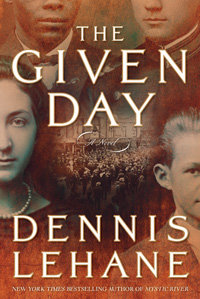The Given Day

Though I am not an admirer or enthusiast of Boston writer Dennis Lehane, who is best known for the novel on which Clint Eastwood based his film Mystic River--I have never quite comprehended the plaudits he has garnered--I did appreciate his recent novel Shutter Island.
And now comes his doorstop of a novel, The Given Day, set in the waning days of the Great War, the War to End All Wars. It is a large and expansive story, mostly set in Boston, and featuring the Boston Police Strike of 1919, a mention of the infamous Boston Molasses Flood, and an interesting tangent on Babe Ruth and major league baseball (Lehane flexes his research muscle, using creditable details to establish the plausibility of the narrative). Who knew that the white ball rule was introduced in 1919 (as the name suggests, requiring that only white balls with red seams be used)?
This commendable effort of Lehane's reminds me of another Bostonian's oeuvre--that of the prolific Robert Parker. His 1994 standalone novel All My Yesterdays ("And all our yesterdays have lighted fools/The way to dusty death," Macbeth, Act V, Sc. 5) begins in 1920s Ireland and follows three generations of two families throughout the tumult of the past century. As an epic tale it is far more satisfying than the crime story procedurals for which Parker is known--among other things, it is devoid of the short, punchy dialogue and sentences and paragraphs that comprise his better-known writing.
